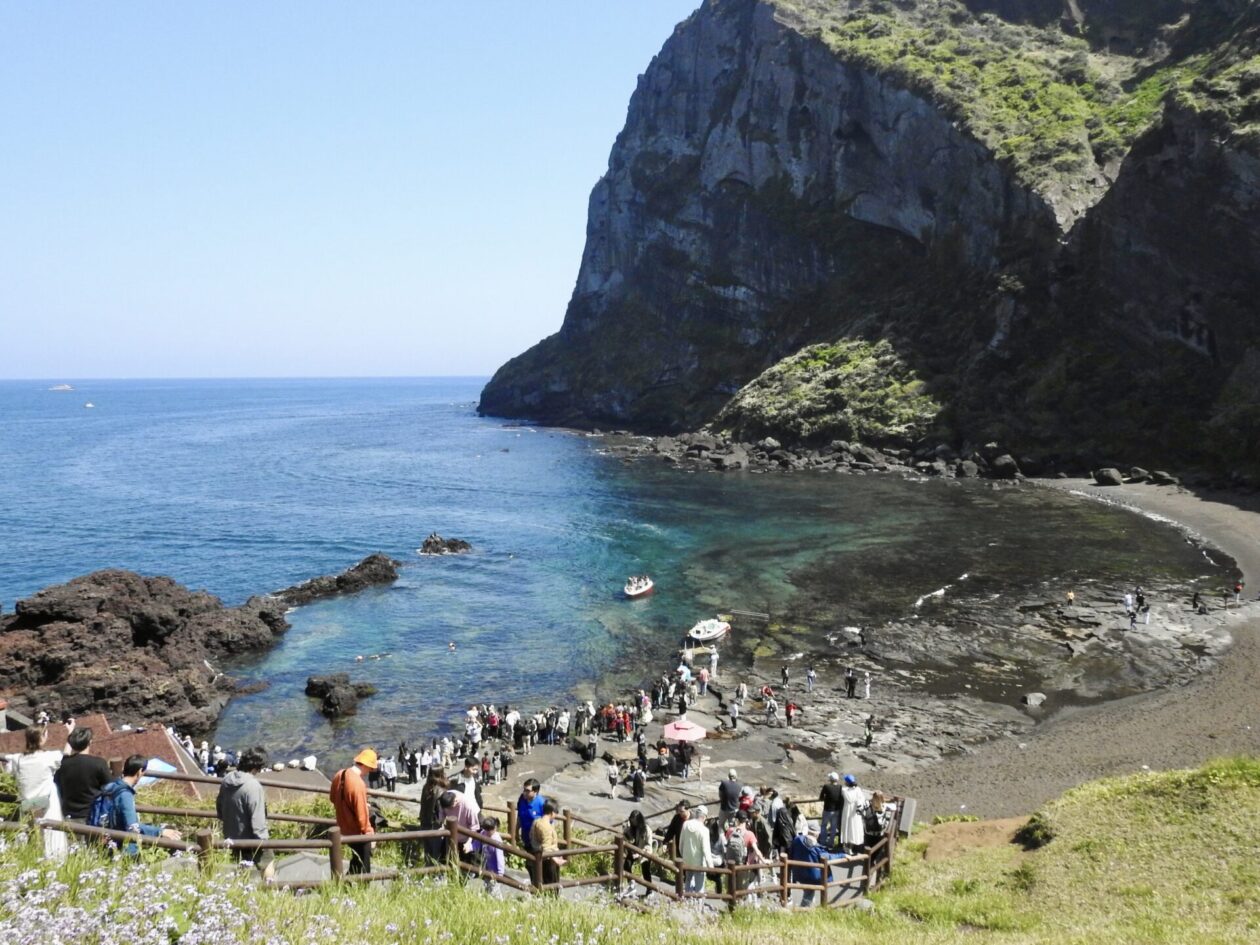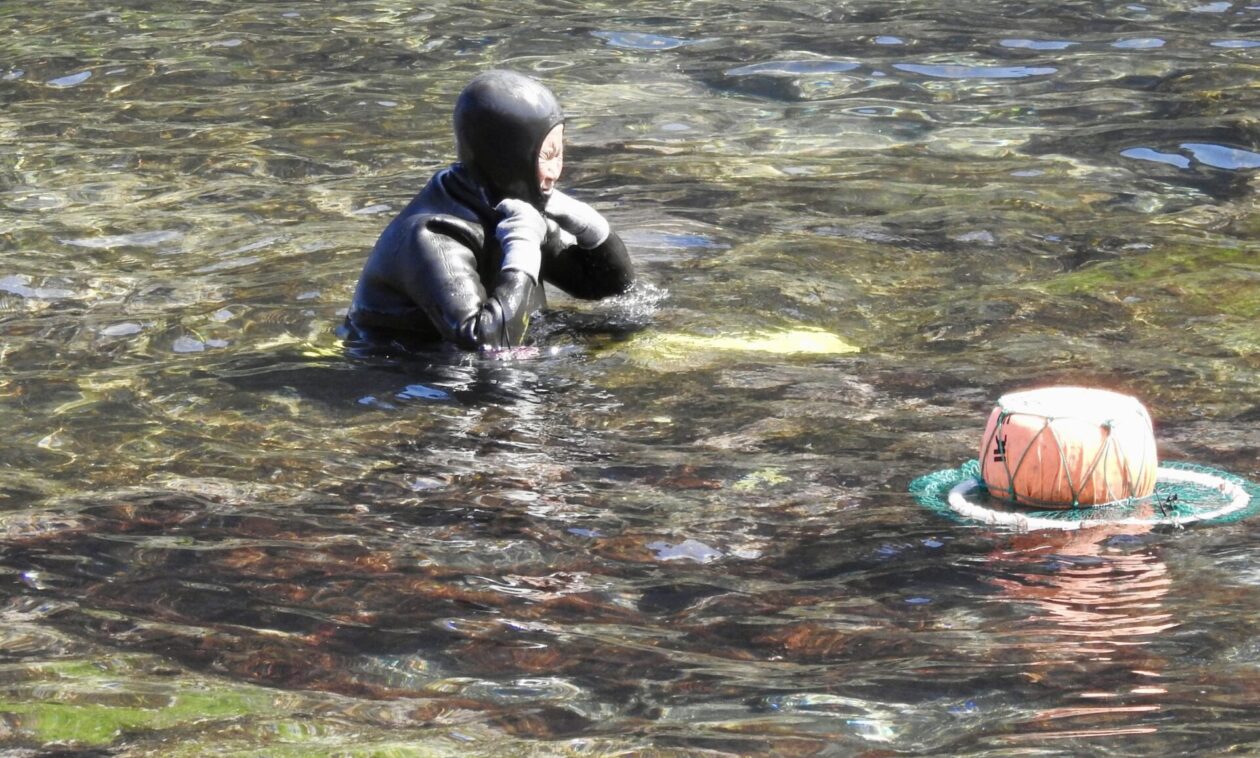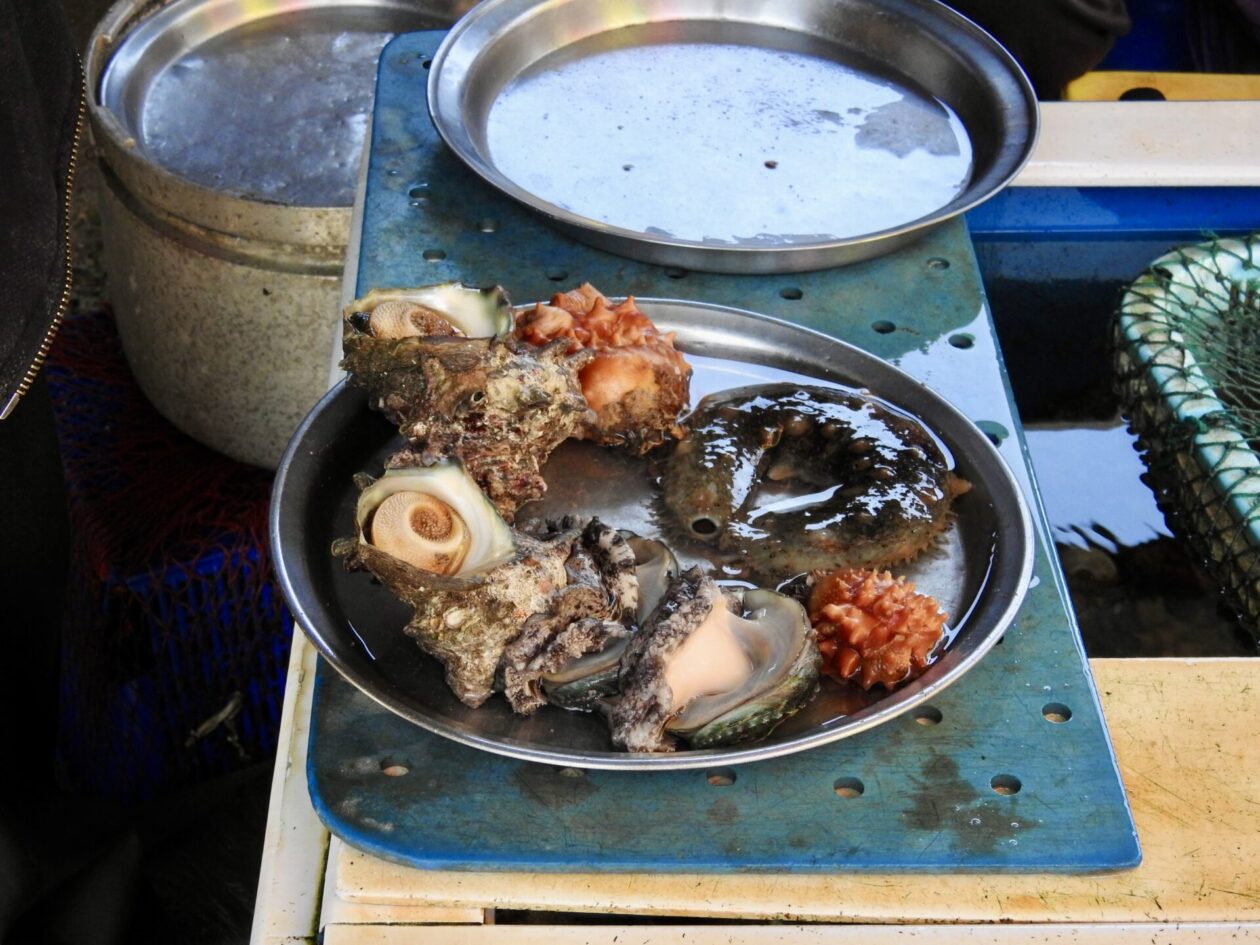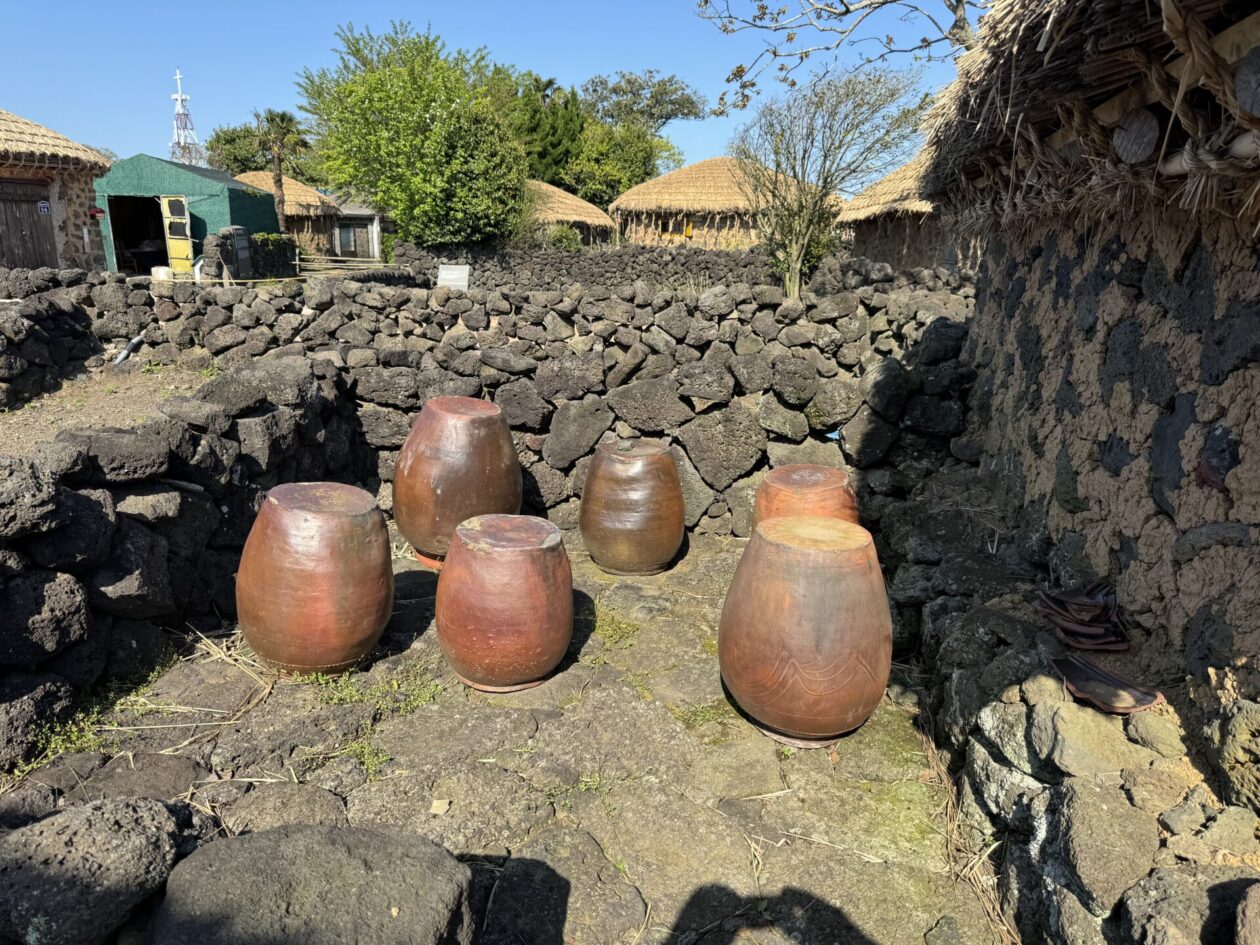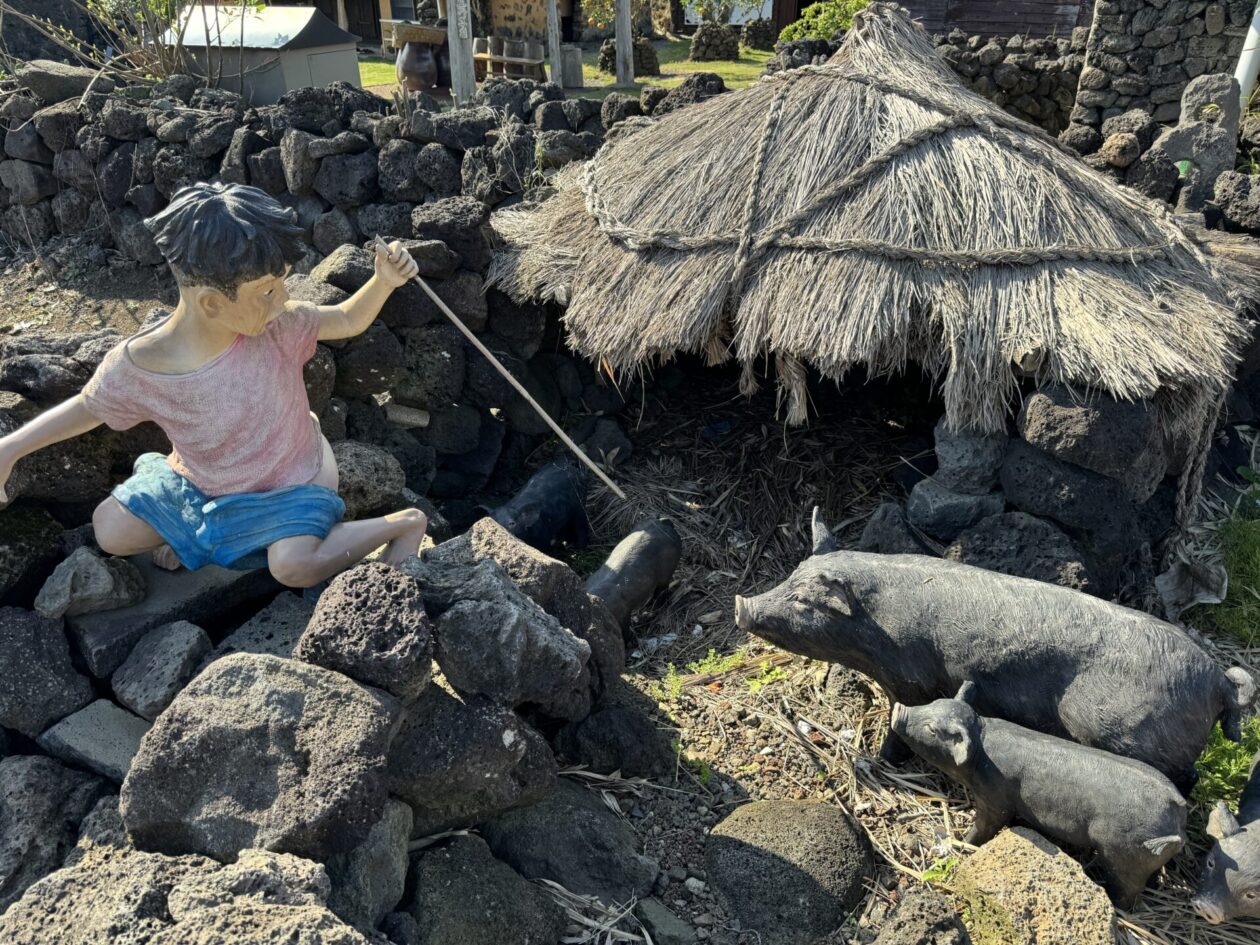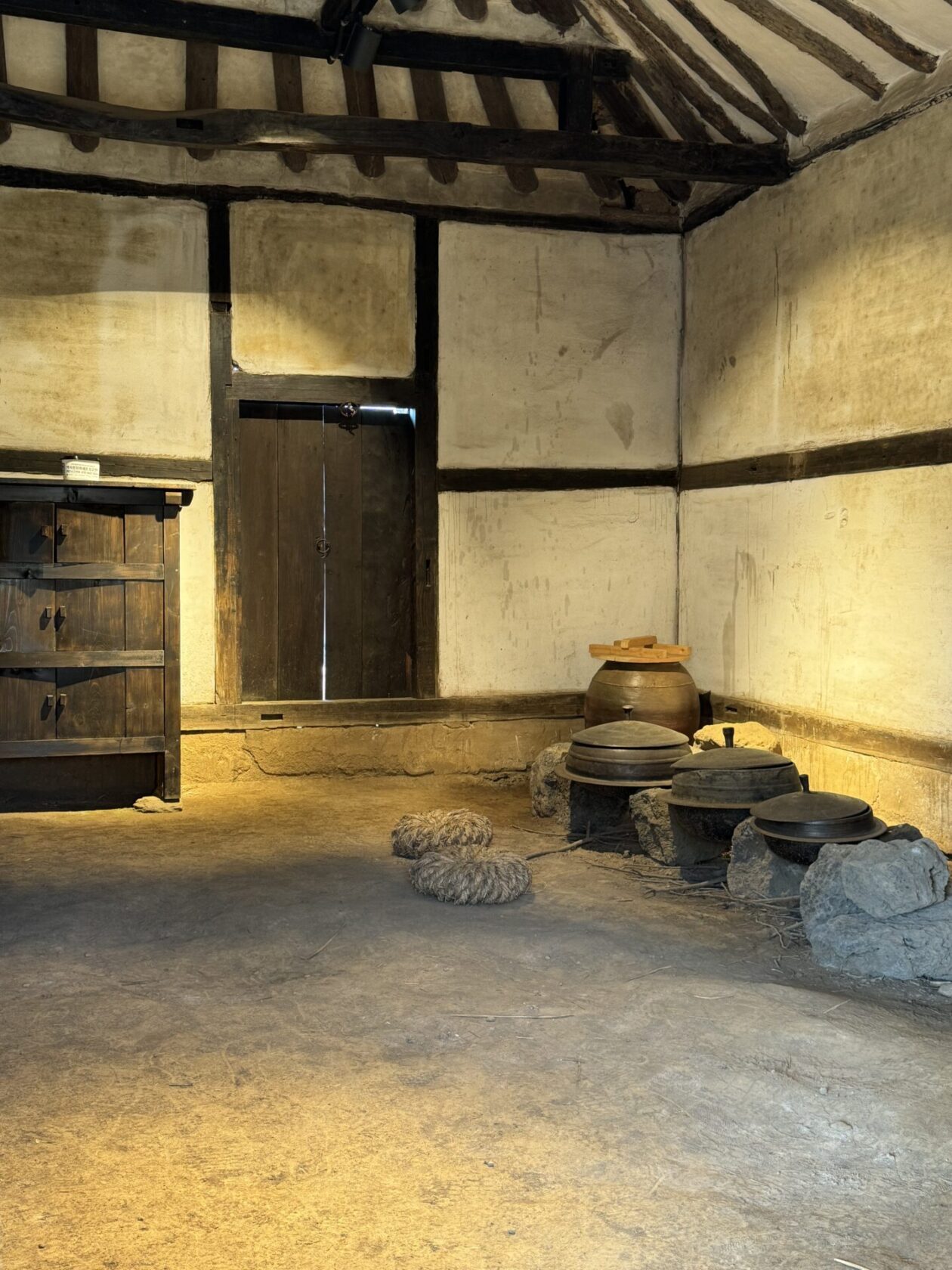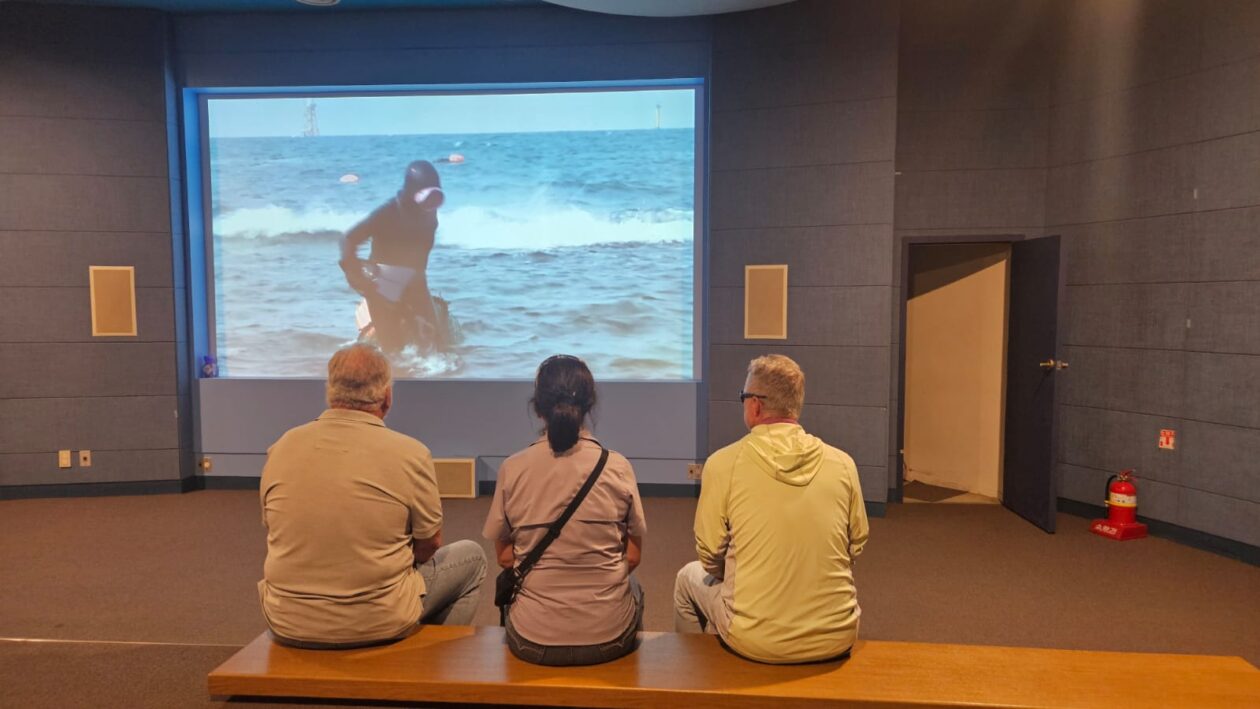- Northern Pacific Wanderings 2024 — here we go!
- Enjoying a few days in Hong Kong
- A day in Kaohsiung and Tainan, Taiwan
- A quick trip to the Penghu Islands
- Two Days in Taipei, Taiwan
- Naha, Okinawa
- Two days in Beijing
- Two days in Incheon and Seoul, South Korea
- Jeju Island, Korea
- Busan, Korea in a day!
- Nagasaki, Japan
- Arita, Japan
- Miyajima and Hiroshima, Japan
- Kyoto’s Bamboo Forest and Rock Garden
- Matsushima, Japan
- Hakadote, Japan
- Kushiro, Japan
- Dutch Harbor….er, Unalaska, Alaska
- Kodiak, AK
- Homer, AK
- Glacier Bay National Park and Preserve, AK
- Sitka, AK
- Klawock and Craig, AK
- A Nanaimo, BC, Canada drive by
- Vancouver BC, end of trip, and final thoughts
Today we stopped in Jeju Island, Korea which is located a little over 50 miles off the Korean Peninsula. It is very mountainous given its volcanic origins and, in fact, there are 360 volcanic domes over its 45 mile length (and 25 mile width). While it is known as the “Hawaii of Korea,” it really isn’t that warm and, in the past few years, they have experienced colder winters, including a fair amount of snow. That is a problem for one of their main industries — tangerines. They originally imported some species of tangerines from both Japan and China and have now growth a number of new species which they sell in a variety of formats (e.g., juice, liquor). So, we were off to explore the eastern side of the island, with our guide, Ken. Ken was a retired Securities analyst who had lived in multiple countries around the world and decided to retire in Jeju. His insights were incredible, although it was a little intimidating when he basically provided a dossier on my life with the excuse that he likes to understand his clients before he meets them. Given the detail of his analysis, I would say that my life is pretty much an open book on the Internet!
Our first stop was Seongsan Ilchulbong (or Sunrise Peak). It is a classic tuff cone formed by hydrovolcanic eruptions about 5 thousand years ago. The tuff cone is about 180 meters high with the base of the crater some 90 meters from the top, with a preserved bowl-like crater that is nicely integrated with the rim. Because of its uniqueness, it has been designated as a Natural World Heritage Site by UNESCO as part of the Jeju Volcanic Island and Lava Tubes. Sadly the lava tubes were closed for needed reinforcement. But we weren’t here to climb the peak; instead we were here to see the haeynyyo, the female divers that have traditionally worked in these waters to gather food from the sea. Today, the average age of these divers is over 65 and their numbers are dwindling since the younger generation doesn’t seem to want to pursue this line of work. Their clothing is simple (either a simple cloth garb or a wetsuit), as are their tools, including a knife, buoy net, and googles. What we saw was a demonstration of their capabilities with them working in a shallow bay, going for abalone and brown seaweed, but they also dive in mud deeper water, with Class A divers able to hold their breath up to 3 minutes. Anyway, we stuck around to see their bounty and later went to a museum that described their life story. The only other women free divers that I am aware of is the female pearl divers in Japan, so they are a unique breed indeed.
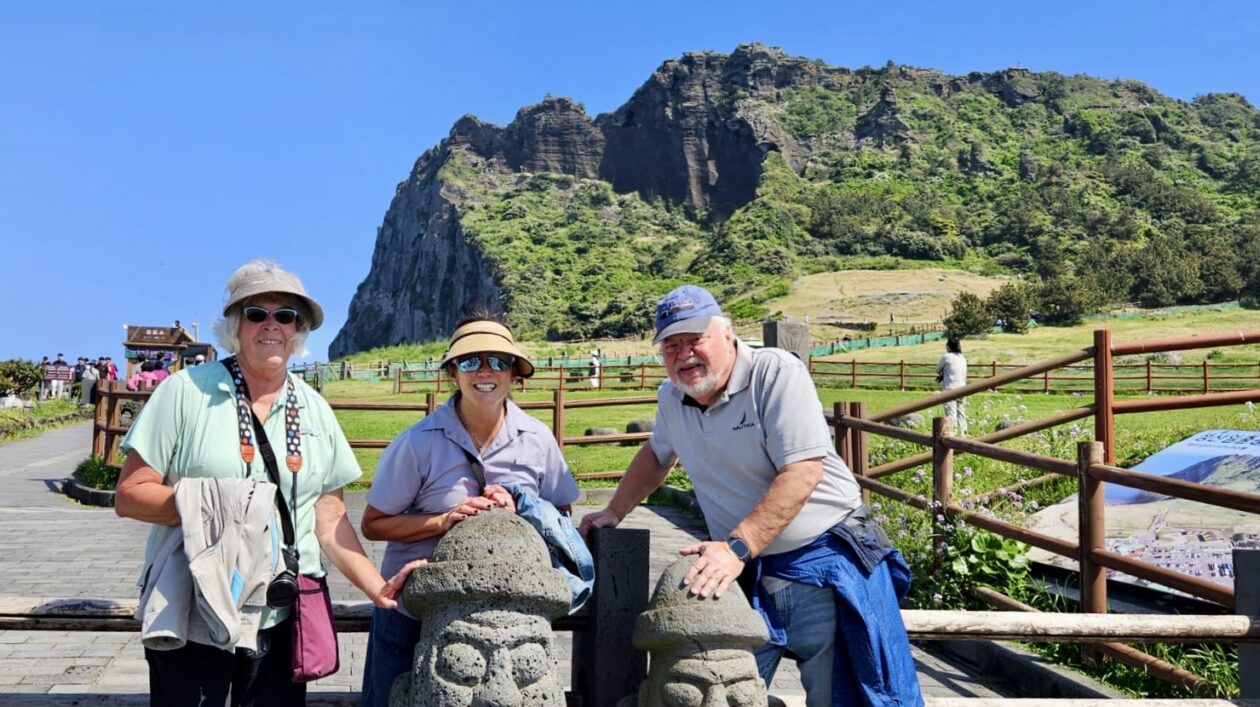
From there, we were off to the Seongeup Folk Village. The indigenous people who live on Jeju are quite different from the rest of the Koreans, or Japanese for that matter. This village was founded in the 19th century and it served as the capital of the Cheongeui-Hyeon tribe. It has lasted pretty much as is over hundreds of years, serving the fishers on the island and helping them maintain their lifestyle. While we were there, workers were weaving the thatched roofs on a couple of buildings. As I understand it, this can be as frequent as an annual event. In addition to the area that is open to visitors, there are several people that live in the village in the traditional way. The government provides subsidies to help the residents maintain the village in traditional style, using traditional means. It was quite an education wandering through the village.
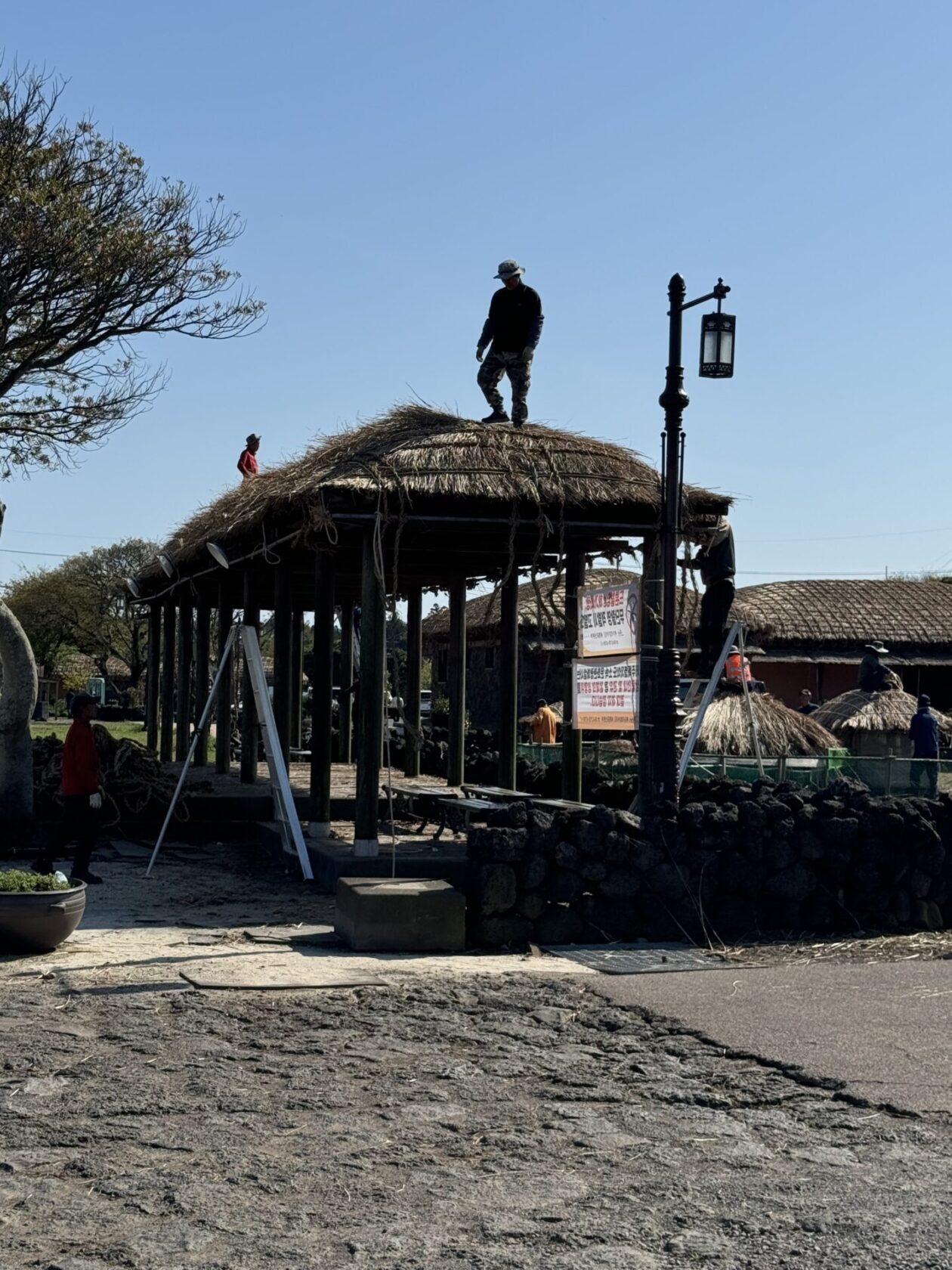
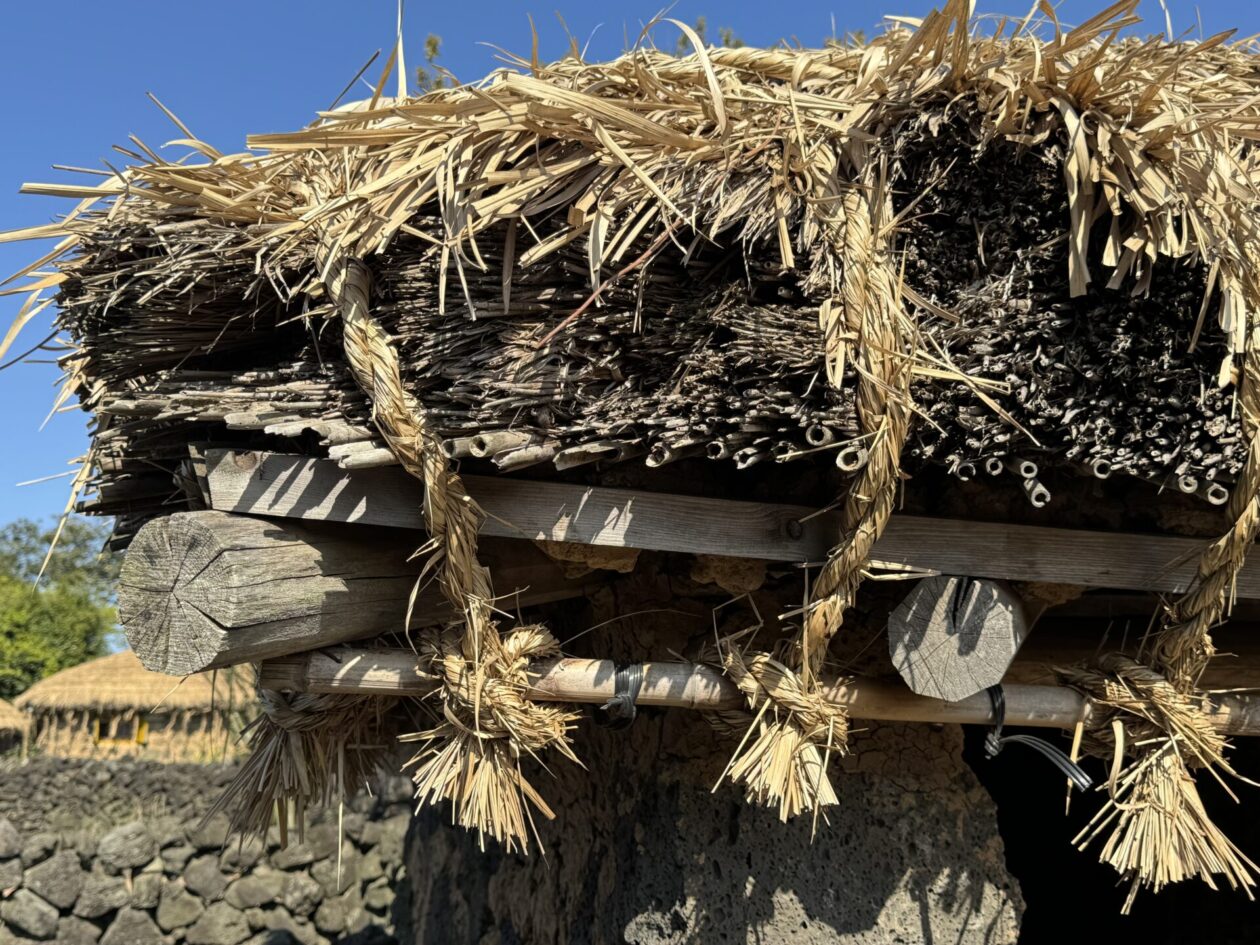
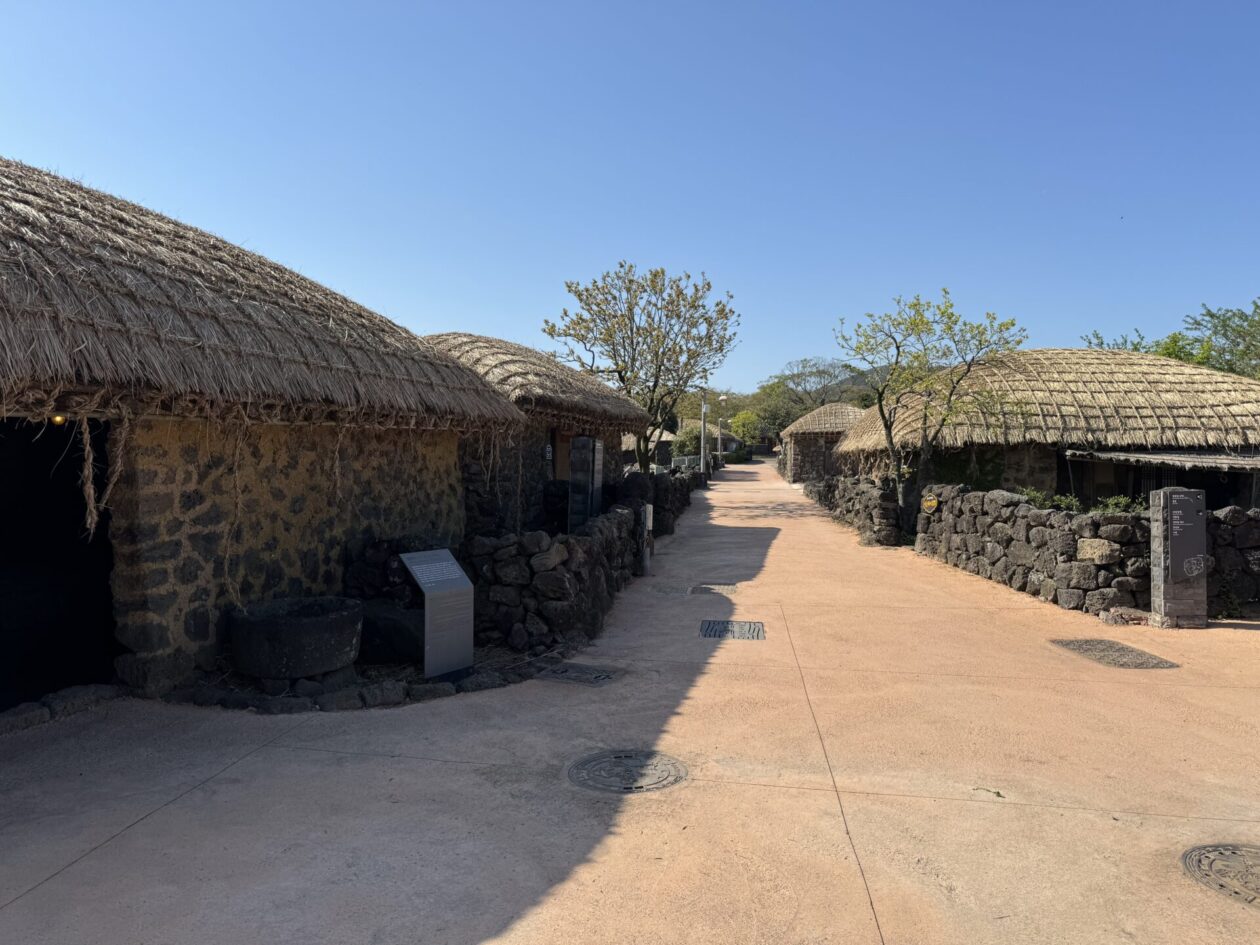
With time running out, we visited the Haenyeo Museum. In addition to reinforcing all the things that we had learned while watching the ladies dive, we also learned what a force they were in politics, especially in the 1930s when they protested the discriminatory practices employed by the Japanese. By all accounts they were successful then, and continue to be successful today in getting the help and funding they need to maintain this tradition that not only contributes to the overall economy of Jeju, but also continues to generate global interest in the hardy life that these women pursue.
We had a very short time on Jeju Island, but feel that we learned a lot in the limited time available. The limited autonomy they enjoy from the Korean government allows them to innovate on the way they run their island. Now if they would only get rid of half the stoplights and most of the speed cameras, it would be a wonderful place to visit again!
This entry was posted in Cruising, Jeju Island, Korea, Travel